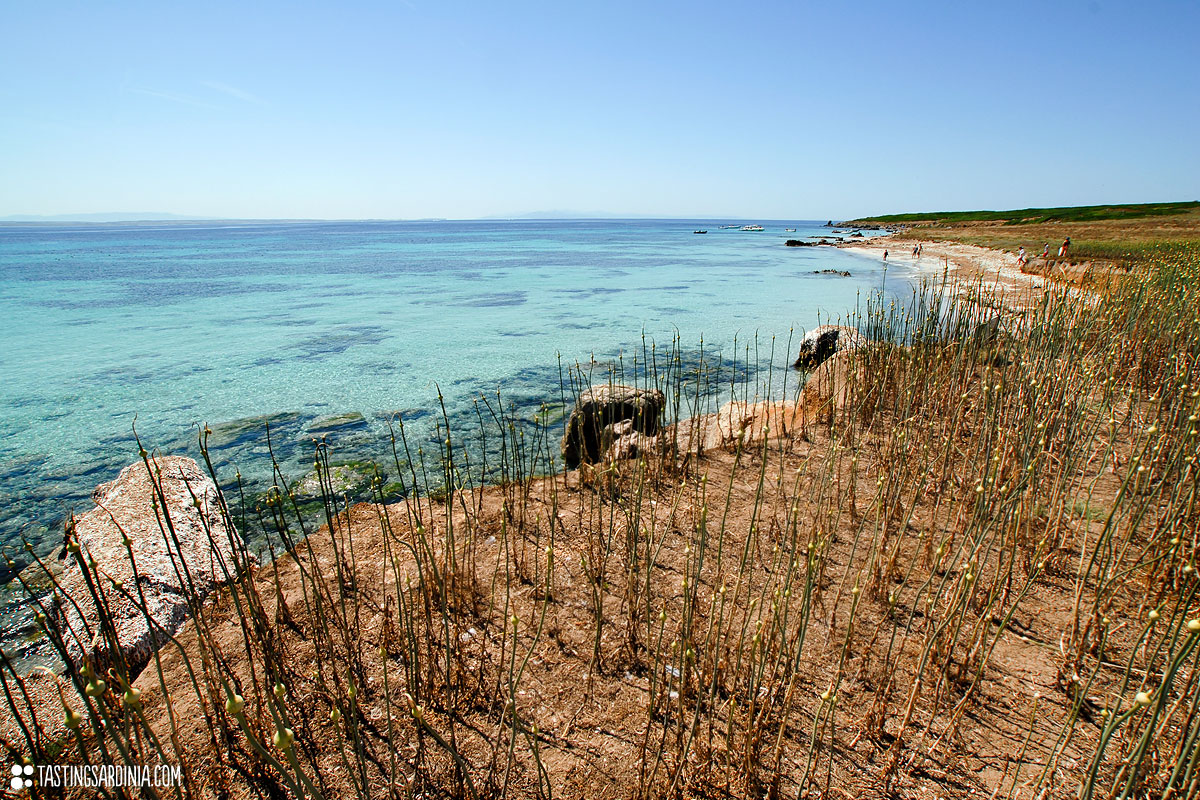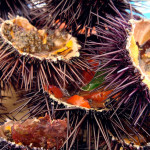7 day pre-designed tour
The most uncontaminated and fascinating parts of Sardinia in touch with people escorted by a local “insider”.
An intense tour designed around our unique accommodations: a worth-living experience in itself. The perfect balance through ancient traditions, food culture, hospitality and magnificent views, the amazing hotels around the town are rustically built.
– max 6 people tour
– escorted by a local English speaker insider
– minivan with private driver
– 7 breakfast, 6 lunch, 4 dinner
– 2 hands on cooking lessons
– demonstration of bread making
– entry tickets for the cultural visits
– transfers from/to airport
Pristine Tour dates 2019
20th of September 2019
Rates
– € 1.950 per person
– Single supplement: € 200 per person
Day 1
– Pick up at the airport
– Scenic drive through Cagliari most beautiful panoramic sites and belvederes through the narrow-cobbled streets of “Castello” viewing the charming cathedral of Santa Maria, the Royal Palace and Pisan Towers.
– Welcome aperitif at Poetto beach and light lunch. Time to relax.
– Overnight at hotel in Cagliari (Hotel Italia or similar).
Day 2
– Visit to the lively San Benedetto market and its colorful fish stalls, including delicious tasting of local produce and crudities.
– Transfer to the village of Villamassargia for a light lunch at a picturesque traditional unfired mudbrick house.
– In the afternoon enjoy a fun hands-on cooking lesson on fresh traditional pasta followed by a refreshing aperitif at the astonishing s’ortu mannu with its majestic ancient olive trees.
– Dinner and overnight at local B&B (e.g Ventanas or similar).
Day 3
– Morning visit to the fascinating Monte Pony or Porto Flavia historic mines.
– We will then move along the near dreamlike coastline with breathtaking views on “Pan Di Zucchero” islet. Time for swimming followed by lunch at a bar-restaurant on the beach.
– Leave south Sardinia and drive to the Sinis Peninsula.
– Check in at hotel (Acquae Sinis or similar).
Day 4
– Morning visit to Tharros ancient Phoenician city set on an enchanting bay.
– We will then explore the wild Seu park and enjoy an aperitif followed by lunch by the beach or at a local restaurant. Time to relax at the hotel.
– Afternoon visit to the intriguing Mont’e Prama Stone Giants exhibition at Cabras museum.
– Evening tour of a Vernaccia unfired mud brick cellar where you will meet the welcoming owners, enjoy a wine tasting and a fun rustic dinner.
– Overnight at Acquae Sinis or similar.
Day 5
– Morning Visit Su Nuraxi, an amazing Nuragic site from 1800 BC, also declared Unesco heritage site.
– Will then move to an olive oil grinding mill, meeting a family of millers and taking a guided tour followed by tasting and lunch with traditional local and organic produce.
– In the afternoon we will take a walk to the beautiful Giara plateau and with a bit of luck we will spot some of the last surviving wild horses in Europe and observe many local endemic botanical species.
– Evening cellar tour and wine tasting of Sardinia red wines followed by pizza dinner at hotel.
– Overnight in the area (Domu Antiga or similar).
Day 6
– Morning visit to a flour grinding mill for a guided tour and flour shopping to be used during your bread making lesson.
– Spend the rest of the day with a local family learning how to make and bake bread and enjoying an unformal lunch and a launeddas private concert with them. Overnight in the area (Domu Antiga or similar).
Day 7
– Free time for shopping followed by transfer to airport.
Sea urchins experience
One of the most fascinating things to do in the capital all-year round is to eat outdoors enjoying the warm sun. For sure the most popular thing in Cagliari is to appreciate what the Mediterranean sea has to offer. If you happened to love simple and original fish dishes, with a strong and unique flavor, sea urchins are the perfect treat. The fresh pulp of their eggs is an incredible combination between sweet and salty, a real delicacy, considerably sought-after by the locals. You will be taken by your local insider to enjoy them raw, close to the seaside at the fishmonger stalls and then straight to Ricciomania restaurant, literally sea urchin mania, for the best sea urchins pasta of the city.
Cagliari city centre
Cagliari, the capital of Sardinia with its metropolitan area can count more than 500.000 inhabitants. Although north Africa is much closer than Rome, Cagliari is the most Italian of Sardinia’s places. It has a very long history having witnessed the rule of several civilizations. Under the buildings of the modern capital there is a continuous stratification of human settlements of about five thousand years, from the Neolithic to today. Strolling the tree-fringed boulevards of the centre you can admire a large Carthaginian necropolis, a Roman amphiteatre, a Byzantine basilica, three Pisan towers, a strong system of fortification that made the town the core of the Spanish empire in the western Mediterranean sea. When D.H. Lawrance arrived in 1920s, he compared the Sardinian capital to Jerusalem: “strange and rather wonderful, not a bit like Italy.”
Visit the largest fish market in Europe and tasting
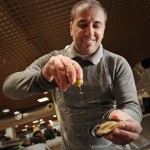 It is a complete and intense experience, if you are a great lover of the good cuisine you are going to love it. Is held at San Benedetto market one of the most fascinating and colourful places in Cagliari. It is considered to be the largest covered fish market in Europe.
It is a complete and intense experience, if you are a great lover of the good cuisine you are going to love it. Is held at San Benedetto market one of the most fascinating and colourful places in Cagliari. It is considered to be the largest covered fish market in Europe.
While strolling the market throughout the shoutings of the characteristics fishmongers that try to communicate with the farthest stall to ask about the remaining species we will get the chance to make a real tasting of the freshest fish on display. Shrimps, see urchins and oysters just to mention a few. We will grab some slices of grey mullet roe, the pricy and well known bottarga with its unmistakable strong flavor or you will have the chance to taste the touching raw mussels just with few drops of lemon on them. On the first floor a huge variety of cheeses from the whole island, especially the pecorino will be waiting for us to be tried, framed with the colours of the vegetables and the fruits of Sardinia.
visit the Fish Market dedicated tour
Porto flavia
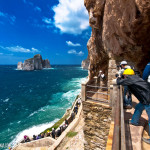 Porto Flavia is an amazing sea harbor part of a dismissed mine located near the extraordinary coast of Nebida. Built in 1923 it served as the mineral production hub of the west cost in the Sulcis area. It is named after Flavia Vecelli, the daughter of Cesare Vecelli, who engineered and designed the harbor. The harbor’s characteristics make it unique in the world both for its location and its history and at the time of its construction it was an outstanding engineering feat. If you didn’t visit it you cannot figure out the greatness of an invention made nearly hundred years ago, a piece of remarkable industrial Sardinian history.
Porto Flavia is an amazing sea harbor part of a dismissed mine located near the extraordinary coast of Nebida. Built in 1923 it served as the mineral production hub of the west cost in the Sulcis area. It is named after Flavia Vecelli, the daughter of Cesare Vecelli, who engineered and designed the harbor. The harbor’s characteristics make it unique in the world both for its location and its history and at the time of its construction it was an outstanding engineering feat. If you didn’t visit it you cannot figure out the greatness of an invention made nearly hundred years ago, a piece of remarkable industrial Sardinian history.
Piscinas beach and its dunes (UNESCO site)
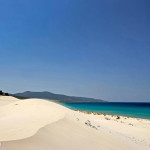 Piscinas and its dunes are considered to be one of the Sardinia marvels as well as of the entire Mediterranean region. Located in the south western coast of Sardinia in the so called Costa Verde (green coast), the beach extends on several kilometers of uncontaminated golden sand. All over it proceeding inwards stand the highest dunes of Europe, with some reaching almost 100 meters. The surroundings are characterized by abandoned and fascinating mining villages, huge sandy dunes covered in juniper, the greenery packed with asphodels, mastic, broom and strawberry which all together gave the “green” epithet to the coast. The great natural beauty of this pristine environment with its huge sandy dunes, the touching blue sea in contrast with the wild mountains will make the visit an unforgettable experience.
Piscinas and its dunes are considered to be one of the Sardinia marvels as well as of the entire Mediterranean region. Located in the south western coast of Sardinia in the so called Costa Verde (green coast), the beach extends on several kilometers of uncontaminated golden sand. All over it proceeding inwards stand the highest dunes of Europe, with some reaching almost 100 meters. The surroundings are characterized by abandoned and fascinating mining villages, huge sandy dunes covered in juniper, the greenery packed with asphodels, mastic, broom and strawberry which all together gave the “green” epithet to the coast. The great natural beauty of this pristine environment with its huge sandy dunes, the touching blue sea in contrast with the wild mountains will make the visit an unforgettable experience.
Meet Vernaccia wine producers in their astonishing unfired clay cellars. Visit the oldest vineyard in the Mediterranean area and the Contini winery
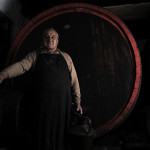 Meet the wine producers in their ancient unfired clay cellars accompanied by a local wine expert. This ancient cellars were not altered along the centuries with their walls made of unfired clay bricks respecting the tradition of the place. We have the chance to chat with some wine producers learning how this sherry-like wine is made and all the secrets to age this precious wine as the ancient system of “fractional blending”.
Meet the wine producers in their ancient unfired clay cellars accompanied by a local wine expert. This ancient cellars were not altered along the centuries with their walls made of unfired clay bricks respecting the tradition of the place. We have the chance to chat with some wine producers learning how this sherry-like wine is made and all the secrets to age this precious wine as the ancient system of “fractional blending”.
During the guided tour we match different levels of ageing with different kinds of local delicacies. From aperitif to desserts, especially those made with almonds, we pairing wines according with its ageing with fish, pasta, veal chops, shellfish, seafood, bottarga.
Visit the oldest vineyard in the Mediterranean with an archeologist and visit the Contini winery of Cabras complet the tour.
Tharros, ancient phoenician city
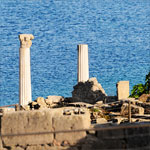 The promontory of San Marco, where Tharros lies, is the extreme end of the Sinis peninsula. The presence of humans in this part of the Island is attested to the pre-Nuragic civilization and among the 100 Nuraghes scattered in the whole Sinis at 4 were found in the promontory. By the way the city was established by the Phoenicians in the 8th century BC and has historically had a very complex multilayered stratification being conquered by the Punics first and the Romans later. It reached its most prosperous time in the 4th century AD, then it started to decline even though it had been inhabited since medieval times. Tharros was a major city in ancient times and its ruins today are considered to be an open-air museum, a must visit.
The promontory of San Marco, where Tharros lies, is the extreme end of the Sinis peninsula. The presence of humans in this part of the Island is attested to the pre-Nuragic civilization and among the 100 Nuraghes scattered in the whole Sinis at 4 were found in the promontory. By the way the city was established by the Phoenicians in the 8th century BC and has historically had a very complex multilayered stratification being conquered by the Punics first and the Romans later. It reached its most prosperous time in the 4th century AD, then it started to decline even though it had been inhabited since medieval times. Tharros was a major city in ancient times and its ruins today are considered to be an open-air museum, a must visit.
Cabras museum, Mont’e Prama Giants exhibition
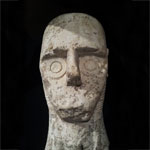 The Cabras museum has always been represented a worth-visiting site in the Sinis area since it can count on remarkable peaces dating back to the Bonu Ighinu culture (5000 bc), or the Ozieri culture (3000/3500 BC). It is fair to say anyhow that with the recent findings and recovery of the Giants of Mont’e Prama things have changed dramatically. For the better. It is not outrageous, considering the huge clamour that they have raised everywhere, to consider the discovery as the new archeological highlight of the Island.
The Cabras museum has always been represented a worth-visiting site in the Sinis area since it can count on remarkable peaces dating back to the Bonu Ighinu culture (5000 bc), or the Ozieri culture (3000/3500 BC). It is fair to say anyhow that with the recent findings and recovery of the Giants of Mont’e Prama things have changed dramatically. For the better. It is not outrageous, considering the huge clamour that they have raised everywhere, to consider the discovery as the new archeological highlight of the Island.
The Giants are ancient stone sculptures, 2 metres (6 feet) high and carved by the Nuragic civilization. According to the most recent estimates, the fragments came from a total of forty four statues. Those already restored and assembled are twenty five, in addition to thirteen nuraghe models, while another three statues and three nuraghe models have been identified from fragments that cannot currently be re-assembled. Some of the statues are on display in the main Cagliari museum, while the rest is standing proudly in the Cabras structure.
Visit nuraghe su Nuraxi of Barumini
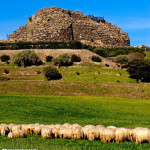 Nuraghes are a charateristic and unique Sardinian megalithic edifice that dot the whole Sardinia with 8000 structures variously preserved. The purpose of Nuraghes is still controversial, most archaeologists assume they were used as religious temples, meeting halls, or military strongholds. These mysterious tower-fortresses, build starting from about the 1800 BC, are the symbol of the Nuragic civilization of Sardinia, lasting from the bronze age to the 2nd century AD.
Nuraghes are a charateristic and unique Sardinian megalithic edifice that dot the whole Sardinia with 8000 structures variously preserved. The purpose of Nuraghes is still controversial, most archaeologists assume they were used as religious temples, meeting halls, or military strongholds. These mysterious tower-fortresses, build starting from about the 1800 BC, are the symbol of the Nuragic civilization of Sardinia, lasting from the bronze age to the 2nd century AD.
The nuragic archeological site of Su Nuraxi of Barumini was included in the UNESCO list of World Heritage Sites in 1997, thanks to the architectural creativity of these ancient artists. The area is open for visitors, and you can see the fortress, while passing in narrow tunnels, which were carved from the walls. The oldest part of Su Nuraxi, the truncated conical central tower, was originally more than 20 meters high, and consists of three overlapping Tholos (typical Nuraghe rooms).
After analyzing an olive tree piece using Carbon-14 dating method, which was found wedged between the huge boulders of basalt that form the structure, it shows that this part of Su Nuraxi dates back to 1478 BC.The four towers surrounding the central bastion, placed in the four cardinal points and originally built on two floors, were presumably built in the thirteenth century BC as well. About two centuries later, the structure was reinforced by adding three extra meters of basalt, making it even harder to enter for unwanted guests.
Visiting a site that was inhabited over 3500 years ago by humans is an emotion in itself but visiting a megalithic tower that was declared a World Heritage Site is a rare and exclusive privilege.
Giara di Gesturi plateau
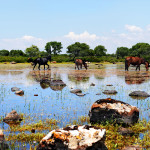 The Giara di Gesturi is a high and steep-sided basaltic plateau which covers almost 45 square kilometers on the highland overlooking the hilly valleys of Marmilla and high Trexenta. The giara was formed some 3 million years ago when lava covered older sedimentary rock. Nowadays in the up-land-flat you can visit a charming natural park with a stunning flora and fauna that for its uniqueness can be found only here. The plateau is home to over 350 plant species, notably the cork oak, and to the majority of the surviving population of the giara horses: the last natural wild horses living in Europe. The park is entirely covered by Mediterranean vegetation and characterized by the plant posture that appears surprisingly inclined to the east because of the insistence of the mistral winds. The entire area is dotted with small pools of water collected in characteristics shallow depressions called paulis, some of which are deep enough to collect water year-round.
The Giara di Gesturi is a high and steep-sided basaltic plateau which covers almost 45 square kilometers on the highland overlooking the hilly valleys of Marmilla and high Trexenta. The giara was formed some 3 million years ago when lava covered older sedimentary rock. Nowadays in the up-land-flat you can visit a charming natural park with a stunning flora and fauna that for its uniqueness can be found only here. The plateau is home to over 350 plant species, notably the cork oak, and to the majority of the surviving population of the giara horses: the last natural wild horses living in Europe. The park is entirely covered by Mediterranean vegetation and characterized by the plant posture that appears surprisingly inclined to the east because of the insistence of the mistral winds. The entire area is dotted with small pools of water collected in characteristics shallow depressions called paulis, some of which are deep enough to collect water year-round.
The Giara Horse (Sardinian: Cuaddeddu de sa Jara, Italian: Cavallino della giara) is a horse-breed native to the island of Sardinia. While of small size due to the hostile environment in which it lives, and sometimes called erroneously “a pony”, it is considered a true horse.
Visit an ethnographic museum
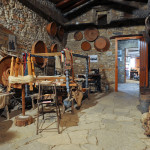 Visit “is Lollasa de is Aiaiusu” (literally the grandparents rooms) an Ethnographic museums of the area where scenes from the day to day country life of the long gone past are represented inside several typical rural houses. Each room are well preserved and furnished with the whole genuine piece of furniture to recreate exactly a XVII century setting.
Visit “is Lollasa de is Aiaiusu” (literally the grandparents rooms) an Ethnographic museums of the area where scenes from the day to day country life of the long gone past are represented inside several typical rural houses. Each room are well preserved and furnished with the whole genuine piece of furniture to recreate exactly a XVII century setting.
Bread making experience
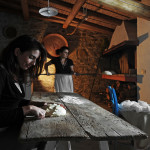 Visit an old bakery and learn everything about bread making with the ancient mother yeast. Locally there is a huge knowledge about kneading with mother yeasts, some have been kept alive for 300 years and are specifically considered subject to study. You will dip your hands in the dough and learn how to make bread with the authentic and raw products.
Visit an old bakery and learn everything about bread making with the ancient mother yeast. Locally there is a huge knowledge about kneading with mother yeasts, some have been kept alive for 300 years and are specifically considered subject to study. You will dip your hands in the dough and learn how to make bread with the authentic and raw products.
Guided visit to the oil mill
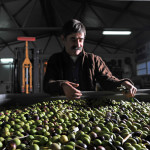 Within the Sarcidano territory there are several oils mills. The one situated in Escolca, a tiny village with almost 500 souls, is the core of our olive oil experience. Being run by the same family for over three generations it will be the perfect setting to understand all the procedures and familiarize yourselves with this fascinating environment. The owners will be more than willing to share their knowledge with you. They will lead the tours starting from the cold pressing with the huge granite millstones to the secrets of storing the precious oil in the right manner.
Within the Sarcidano territory there are several oils mills. The one situated in Escolca, a tiny village with almost 500 souls, is the core of our olive oil experience. Being run by the same family for over three generations it will be the perfect setting to understand all the procedures and familiarize yourselves with this fascinating environment. The owners will be more than willing to share their knowledge with you. They will lead the tours starting from the cold pressing with the huge granite millstones to the secrets of storing the precious oil in the right manner.
Oil tasting with an expert
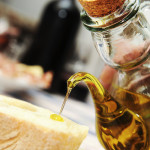 The legitimate place for an olive oil education to start is with a guided tasting. Extra virgin olive oil has been prominent in the news recently, but all this clamour isn’t going to be significant unless you can connect it to the sensory experience, the aroma and taste of olive oil. Professional olive oil tasters will sip the best oils we can offer straight from suitable glasses and will help you learn to recognize characteristics without the complication of other flavours.
The legitimate place for an olive oil education to start is with a guided tasting. Extra virgin olive oil has been prominent in the news recently, but all this clamour isn’t going to be significant unless you can connect it to the sensory experience, the aroma and taste of olive oil. Professional olive oil tasters will sip the best oils we can offer straight from suitable glasses and will help you learn to recognize characteristics without the complication of other flavours.
Cup the glass in one hand and cover it with the other to trap the aromas inside while you warm it up, hold it, swirl it, then stick your nose into the glass and take a good whiff to “trace” that fruity feeling given by the artichokes, grass and herbs notes.
Visit a local winery
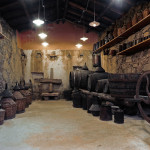 Visiting a local winery will convey a lot about the wine making tradition. You will learn about the domestic grapes, technics and environment where the wine has been produced from centuries. Finally give the glass a good swirl enjoying the wine tasting we will have organized for you to evaluate and appreciate the local grapes this part of the land has to offer.
Visiting a local winery will convey a lot about the wine making tradition. You will learn about the domestic grapes, technics and environment where the wine has been produced from centuries. Finally give the glass a good swirl enjoying the wine tasting we will have organized for you to evaluate and appreciate the local grapes this part of the land has to offer.
Meet and chat with centenarians in their homes
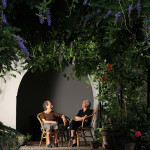 We arrange meetings with centenarians who are still living in the blue zone. Since most of them communicate at ease only speaking sardinian (Sardinia original language) you will be accompanied by an English/Sardinian speaker to enjoy the chat and ask whatever your curiosities or interests may be. Meeting them, spending some good time with this guys immersed in their usual habit, chatting and laughing at their bits of humour will be a breath-taking experience.
We arrange meetings with centenarians who are still living in the blue zone. Since most of them communicate at ease only speaking sardinian (Sardinia original language) you will be accompanied by an English/Sardinian speaker to enjoy the chat and ask whatever your curiosities or interests may be. Meeting them, spending some good time with this guys immersed in their usual habit, chatting and laughing at their bits of humour will be a breath-taking experience.
Learn how to cook their recipes and try them during the meals
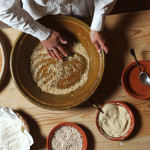 We have been organizing cooking lessons about the centenarians style and custom for a while. We interviewed some of them to reproduce what was like a normal and usual meal in those years at the beginning of the last century. Learning more about their diet represents the opportunity to make a valuable cultural experience while appreciating how to combine simple and tasty flavours. The recipes extend from soups made with wild vegetables to ancient home made pasta dishes, game meat recipes and ways to store the food without refrigerating them. LINK CENTENARIANS MEAL, LINK ANCIENT RECIPES
We have been organizing cooking lessons about the centenarians style and custom for a while. We interviewed some of them to reproduce what was like a normal and usual meal in those years at the beginning of the last century. Learning more about their diet represents the opportunity to make a valuable cultural experience while appreciating how to combine simple and tasty flavours. The recipes extend from soups made with wild vegetables to ancient home made pasta dishes, game meat recipes and ways to store the food without refrigerating them. LINK CENTENARIANS MEAL, LINK ANCIENT RECIPES
Launeddas private performance
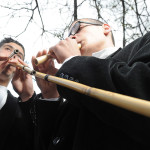 We are proud to let you discover one of the most ancient woodwind instruments of Sardinia simply made out of reed and played with a continuous mouth-blown technique (circular breathing). The most ancient proof of the existence of launeddas in Sardinia is given by the little votive bronze statue called bronzetti dating back to the X c. BC in the nuraghe period. It is a polyphonic instrument made of three pipes. The circular breathing technique allows the musician to play them simultaneously: one of the pipes as a drone while the other two playing the melody.
We are proud to let you discover one of the most ancient woodwind instruments of Sardinia simply made out of reed and played with a continuous mouth-blown technique (circular breathing). The most ancient proof of the existence of launeddas in Sardinia is given by the little votive bronze statue called bronzetti dating back to the X c. BC in the nuraghe period. It is a polyphonic instrument made of three pipes. The circular breathing technique allows the musician to play them simultaneously: one of the pipes as a drone while the other two playing the melody.
